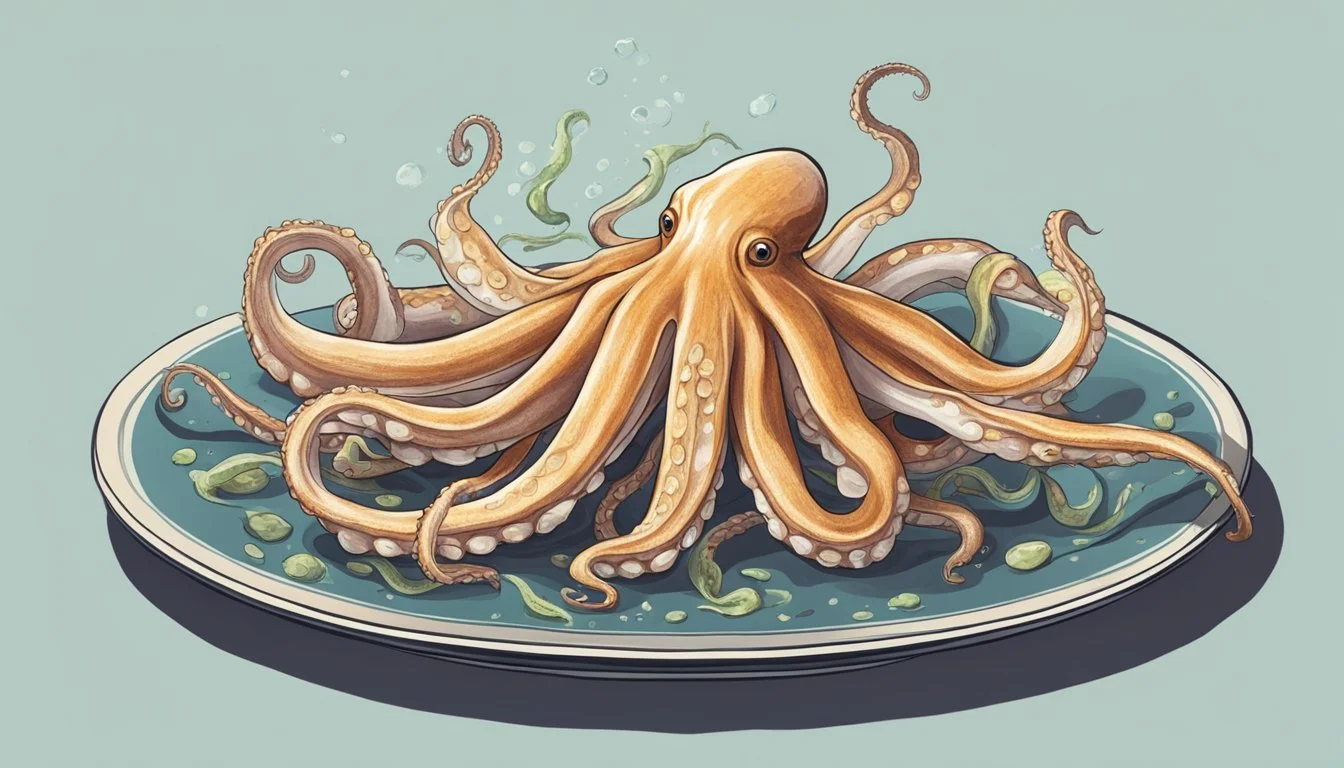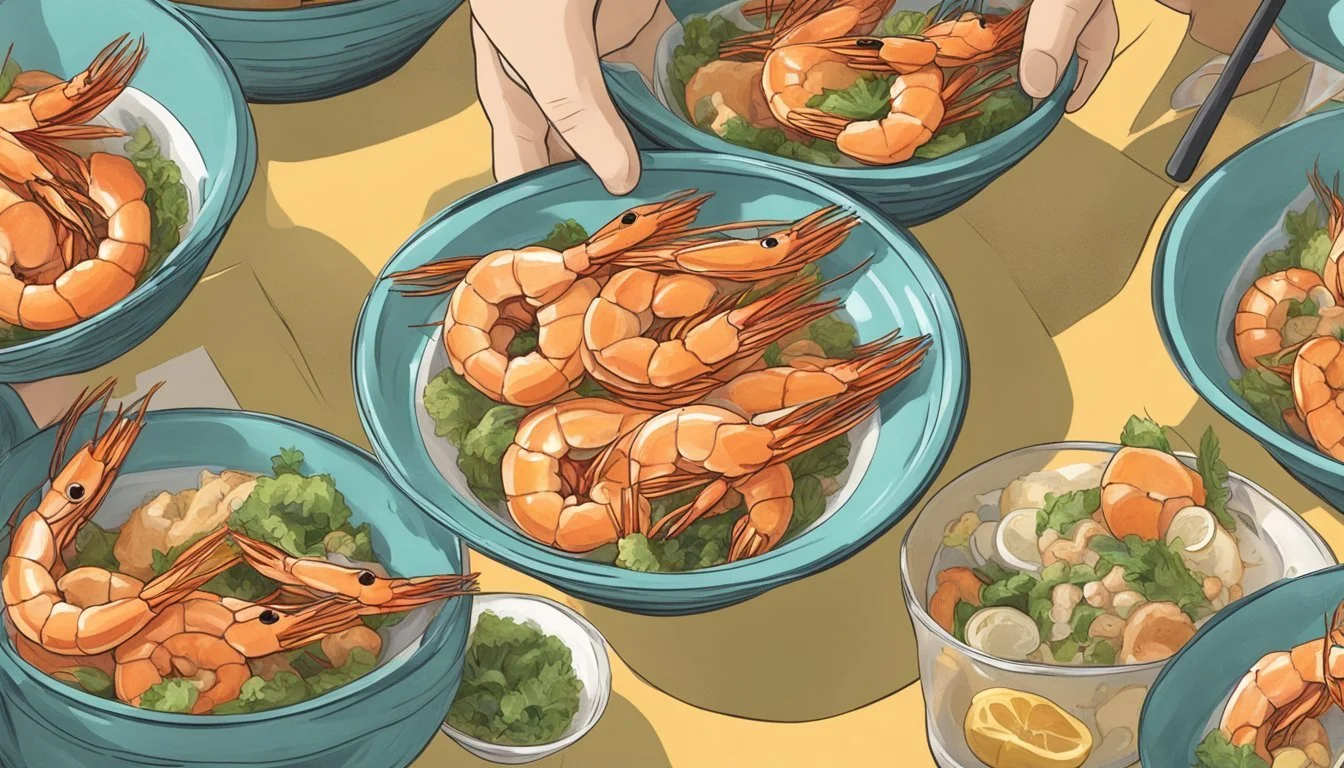10 Animals People Eat Alive
Unconventional Culinary Practices Worldwide
The culinary world is vast and varied, with some practices sparking curiosity and controversy alike. Among these, the practice of eating animals while they are still alive stands out prominently. This tradition is rooted in cultural customs, survival instincts, and sometimes sheer novelty, reflecting an array of dining experiences that can be both shocking and fascinating.
What motivates humans to eat animals alive? The reasons range from cultural traditions and culinary delectations to the thrill of a unique gastronomic adventure. By delving into this practice, readers gain a deeper insight into the cultural and ethical dimensions that influence such audacious dining choices. Through this exploration, the article aims to provide a balanced perspective on a practice that, while uncommon, has notable significance in various parts of the world.
1) Odori-don (Dancing Squid)
Odori-don, also known as the "dancing squid," is a Japanese dish where a whole squid is placed on a bowl of rice or noodles. When soy sauce is poured over the squid, it appears to "dance."
This reaction occurs because the sodium in the soy sauce triggers muscle contractions, even though the squid is no longer alive.
The dish is considered a delicacy in Hakodate, Hokkaido, Japan. Despite its startling appearance, the squid is already dead before it reaches the table. The presentation, however, can be quite dramatic for those unfamiliar with the dish.
The squid is commonly accompanied by other ingredients like salmon eggs and various toppings. Odori-don highlights a unique blend of culinary technique and scientific reaction, creating an experience that is both visually and gastronomically engaging.
2) Ikizukuri (Live Fish Sushi)
Ikizukuri, which translates to "prepared alive," is a Japanese culinary practice that involves serving sashimi made from live seafood. The fish, or occasionally other sea creatures like octopus, shrimp, and lobster, are prepared in such a way that they remain alive until just before consumption.
The technique is meant to showcase the freshness of the seafood. Chefs skilled in ikizukuri aim to create a delicate balance between the living state of the animal and its presentation as food. This involves precise cuts and a careful approach to minimize the animal's suffering while ensuring that it remains technically alive.
Ikizukuri is controversial. Animal rights advocates argue that it causes unnecessary suffering to the seafood used. Proponents claim that it is a traditional method that reflects the utmost respect for the ingredients, highlighting their natural qualities in the most direct way possible.
The practice requires a high level of skill and is often considered a form of culinary art. Only trained chefs with years of experience are typically qualified to prepare ikizukuri. This ensures that the process is carried out responsibly and with the necessary expertise to achieve its intended effect.
3) San-nakji (Live Octopus)
San-nakji is a traditional Korean dish made from a long-arm octopus species known as nakji. This dish is notable for its unique serving style, where the octopus is typically served freshly chopped or whole, often while it is still moving. It is a popular delicacy in Korea and is often seasoned with sesame oil to enhance its natural flavors.
The preparation involves quickly killing the octopus and then cutting it into small pieces. The pieces may still wriggle on the plate, providing an unusual culinary experience. Due to its preparation, it is considered a challenging dish that requires careful chewing to avoid choking hazards.
San-nakji's texture is described as chewy and slightly salty. While it is a favored dish in Korea, it has been met with criticism in other parts of the world, particularly concerning animal welfare and ethics. Critics argue that the method of preparation raises significant ethical concerns, prompting debates on the practice.
Despite the controversy, San-nakji remains a staple in Korean cuisine, often enjoyed as a meal or a late-night snack. The dish's unique characteristics and preparation make it an intriguing and memorable dining experience.
4) Drunken Shrimp
Drunken Shrimp is a notable dish in Chinese cuisine, known for its unique preparation involving live freshwater shrimp. The shrimp are marinated in a potent liquor, typically Shaoxing wine. This technique enhances the shrimp's natural flavors and adds a subtle sweetness.
In some variations of the dish, the shrimp are consumed live. The alcohol stuns the shrimp, making them easier to eat while still alive. This preparation method is popular in several regions of China.
Different areas of China have their own recipes and methods for preparing Drunken Shrimp. These differences reflect local culinary traditions. Yet, the core process of immersing live shrimp in alcohol remains consistent.
This dish is enjoyed for its fresh taste and the distinct flavor imparted by the alcohol. It remains a popular example of live seafood consumption in Chinese cuisine.
5) Ying Yang Fish
Ying Yang Fish, also known as Yin and Yang Fish, is a controversial Chinese dish. The recipe involves deep-frying a live fish while keeping its head intact and moving. This method results in a startling presentation where the fish appears both dead and alive simultaneously.
The dish originated from Sichuan cuisine and has gained notoriety for its unusual preparation. Notably, chefs need to exercise care to avoid damaging the fish's vital organs during cooking. Deep frying the body while leaving the head untreated allows the fish to remain alive for a short period.
This practice has sparked significant backlash from animal rights groups. In particular, organizations such as People for the Ethical Treatment of Animals (PETA) have condemned it, calling it inhumane and cruel.
Despite its controversial nature, Ying Yang Fish remains a unique example of traditional Chinese culinary practices. The dish continues to be prepared in some parts of China and Taiwan, mesmerizing and appalling diners in equal measure.
6) Casu Marzu (Live larvae cheese)
Casu Marzu, meaning "rotten cheese" in Sardinian, is a traditional cheese made from sheep's milk. Originating in Sardinia, this cheese earns its distinct texture and flavor from the live larvae of the cheese fly, Piophilidae.
The larvae are introduced to the cheese to enhance its fermentation process. Their digestive activity breaks down the cheese fats, giving it a soft texture and strong flavor. Some describe the taste as spicy, pungent, or sharp.
This delicacy is typically enjoyed with Sardinian bread and strong red wine. The larvae themselves are small, translucent, and should be alive when eaten, as their movement indicates freshness. Some eat the cheese with the larvae intact, while others remove them beforehand.
Casu Marzu is controversial and illegal in many places due to health regulations. Its production and consumption persist in Sardinia, where it holds cultural significance. Despite its polarizing nature, Casu Marzu remains a testament to the diverse and unique ways people enjoy cheese worldwide.
7) Goong Ten (Dancing Shrimp)
Goong Ten, known as "dancing shrimp," is a unique dish from Northern Thailand. It features live freshwater shrimp, making it an adventurous eating experience.
Fresh herbs such as cilantro, mint, and lemongrass complement the shrimp's flavor. The shrimp are often seasoned with a spicy sauce made from fish sauce, chili, garlic, and lime juice.
This dish is a staple in Thai street food culture. The shrimp are typically small and are sourced directly from freshwater. They are served live, creating a "dancing" effect as they move in the dish.
8) Chitosan (Live Crab Powder)
Chitosan is derived from chitin, a natural substance found in the shells of crustaceans such as crabs, shrimp, and lobsters.
To produce chitosan, these shells are harvested and undergo a process of deacetylation.
This transforms chitin into chitosan, which is used in various supplements and products.
The production of chitosan from live crabs is not typical.
Usually, only the shells left after the crabs are consumed or processed are used.
Chitosan is often marketed for its potential health benefits.
These include blood sugar regulation and weight loss.
Research suggests that chitosan might help improve insulin resistance and promote glucose uptake by tissues.
This makes it a topic of interest in the medical field.
Chitosan is also touted for its role in wound healing and kidney health.
It's the second most abundant natural polysaccharide after cellulose.
Despite these benefits, it is essential to conduct further studies to fully understand its effects on human health.
Individuals interested in chitosan supplements should consult with healthcare providers to ensure its safety and efficacy for their needs.
9) Nam Pla (Fish Sauce with Live Fish)
Nam Pla, a traditional Thai condiment, typically does not involve live fish in its preparation. It is made by fermenting fish with salt.
In a unique variant, some street vendors may serve live fish immersed in the sauce. These fish add a fresh flavor.
The fish sauce itself is dark amber in color and has a strong, salty taste.
Chilies, garlic, and lime juice are often added to enhance the flavor.
This combination is used to complement many Thai dishes, bringing a vibrant and pungent taste.
Despite its bold aromas, Nam Pla harmonizes well with other ingredients, enriching the food without overpowering it.
It is favored for its ability to provide a complex taste profile that merges the heat of chilies with the umami of fish.
10) Witchetty Grub (Live Insect)
The witchetty grub is a larva found in Australia, often consumed live by some indigenous communities. It comes from the cossid moth, particularly the species Endoxyla leucomochla. These grubs feed on the roots of the witchetty bush, also known as Acacia kempeana.
In appearance, the witchetty grub is plump and white with a creamy texture. Indigenous Australians have historically included it in their diet as a significant source of protein. They usually extract the grubs from their burrows in the roots of bushes.
Witchetty grubs are eaten live for their high nutritional value. The taste is often described as mildly nutty when eaten raw, and they provide a quick, energy-rich snack. Despite their unusual appearance to outsiders, these grubs hold cultural significance and are an essential part of traditional bush tucker.
Cultural Significance
Different cultures have distinctive reasons and traditions behind the practice of eating animals alive. Understanding these practices involves looking into historical origins and examining how they vary across regions.
Historical Context
The practice of eating live animals dates back centuries and is rooted in various cultural and ritualistic traditions. In many East Asian countries, the practice symbolized strength, virility, and connection to nature.
Live consumption was sometimes believed to confer the animal's vitality or provide fresher and richer flavors. These beliefs have persisted, adapting with modernization but maintaining their core values.
Eating live animals was also sometimes a matter of survival. In historical periods of scarcity, live insects and small creatures provided an immediate source of nutrients. This necessity over time intertwined with cultural rituals, reinforcing the practice in certain communities.
Regional Practices
The practice of eating live animals is particularly prominent in East Asian culinary traditions, especially in China, Japan, and Vietnam. In these regions, specific dishes like live baby octopus, known as sannakji, and live shrimp are considered delicacies.
In Japan, live fish dishes such as ikizukuri are prepared so the heart still beats as it's served. These dishes emphasize freshness and require precise culinary skills to prepare.
In some European cultures, live consumption is more controversial but still practiced. For example, certain Scandinavian countries include live insect delicacies. In Denmark, live ants are sometimes used in salads, often flavored to enhance taste.
These regional differences underscore a broader cultural acceptance of consuming live animals, often tied to historical and modern interpretations of culinary excellence and tradition.
Health Implications
Eating live animals can have various health implications, ranging from nutrient intake to significant health risks. These considerations are important for understanding the overall impact on human health.
Nutritional Benefits
Consuming live animals can provide a wide array of nutrients. Freshness is a key benefit, as the nutritional content has not degraded. Proteins and essential amino acids are readily available, supporting muscle development and overall bodily functions.
Additionally, live animals can offer a high concentration of vitamins and minerals. For instance, eating certain seafood live can provide Vitamin B12, Omega-3 fatty acids, and zinc. These nutrients are critical for various bodily functions including brain health and immune support.
Enzymes present in live animals may also assist in improving digestion and metabolism. The act of consuming live animals can also ensure the intake of bioavailable nutrients, which might be lost during cooking or processing.
Health Risks
Despite nutritional benefits, there are significant health risks associated with eating live animals. Pathogens such as bacteria, viruses, and parasites present in live animals can cause severe illnesses. These include salmonella, E. coli, and tapeworm infections.
The risk of foodborne diseases is heightened, posing a direct threat to the gastrointestinal system. Allergic reactions are another concern, particularly for those with sensitivities to specific animals or seafood.
Consuming live animals can also introduce toxins that the animal might have ingested, leading to potential poisoning. Health risks extend beyond immediate effects; long-term exposure to certain pathogens can lead to chronic conditions or complications requiring medical intervention.
Ethical Considerations
The ethics of eating animals alive bring forth significant debates around animal welfare and legal regulations. Understanding these aspects can provide a broader perspective on this controversial practice.
Animal Welfare
Eating animals alive raises serious animal welfare concerns. Many argue that it inflicts unnecessary suffering on creatures capable of experiencing pain and distress.
Organizations dedicated to animal welfare emphasize the importance of humane treatment during all stages of an animal's life.
Practices that involve consuming animals alive are often considered a form of cruelty, as they bypass any measures intended to minimize suffering. Knowing that these animals are subject to extreme stress and pain adds weight to the ethical argument against such practices.
Legal Regulations
Legal regulations concerning the consumption of animals alive vary significantly across the globe.
Some countries have stringent laws that prohibit inhumane treatment of animals, including during slaughter. However, enforcement and specifics of these regulations differ widely, leading to ethical inconsistencies.
In regions with less stringent laws, traditional or cultural practices might take precedence, allowing the continued existence of such practices. Understanding the legal landscape is crucial for comprehending how these ethical decisions are framed and enforced in different parts of the world.











